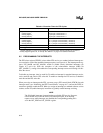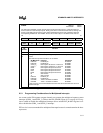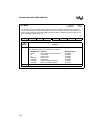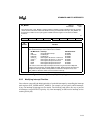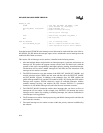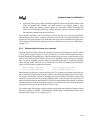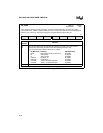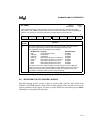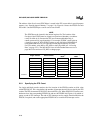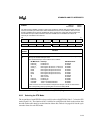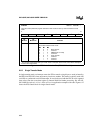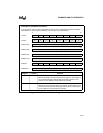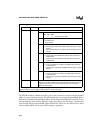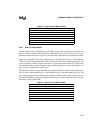
8XC196NP, 80C196NU USER’S MANUAL
6-18
The address of the first (lowest) PTSCB byte is stored in the PTS vector table in special-purpose
memory (see “Special-purpose Memory” on page 5-6). Figure 6-9 shows the PTSCB for each
PTS mode. Unused PTSCB bytes can be used as extra RAM.
NOTE
The PTSCB must be located in the internal register file. The location of the
first byte of the PTSCB must be aligned on a quad-word boundary (an address
evenly divisible by 8). Because the PTS uses nonextended addressing, it
cannot operate across page boundaries. For example, PTSSRC cannot point to
a location on page 05 while PTSDST points to page 00. In the 8XC196NP, all
nonextended data accesses will operate from the page defined by EP_REG.
For PTS routines, write 00H to EP_REG to select page 00H (see “Accessing
Data” on page 5-23). The 80C196NU forces all nonextended data accesses to
page 00H. You cannot use EP_REG to change pages.
6.6.1 Specifying the PTS Count
For single and block transfer routines, the first location of the PTSCB contains an 8-bit value
called PTSCOUNT. This value defines the number of interrupts that will be serviced by the PTS
routine. The PTS decrements PTSCOUNT after each PTS cycle. When PTSCOUNT reaches zero,
hardware clears the corresponding PTSSEL bit and sets the PTSSRV bit (Figure 6-10), which re-
quests an end-of-PTS interrupt. The end-of-PTS interrupt service routine should reinitialize the
PTSCB, if required, and set the appropriate PTSSEL bit to re-enable PTS interrupt service.
Single Transfer Block Transfer
PWM Toggle
Mode
PWM Remap
Mode
Unused Unused PTSCONST2 (H) Unused
Unused PTSBLOCK PTSCONST2 (L) Unused
PTSDST (H) PTSDST (H) PTSCONST1 (H) PTSCONST1 (H)
PTSDST (L) PTSDST (L) PTSCONST1 (L) PTSCONST1 (L)
PTSSRC (H) PTSSRC (H) PTSPTR1 (H) PTSPTR1 (H)
PTSSRC (L) PTSSRC (L) PTSPTR1 (L) PTSPTR1 (L)
PTSCON PTSCON PTSCON PTSCON
PTSVECT PTSCOUNT PTSCOUNT Unused Unused
Figure 6-9. PTS Control Blocks



